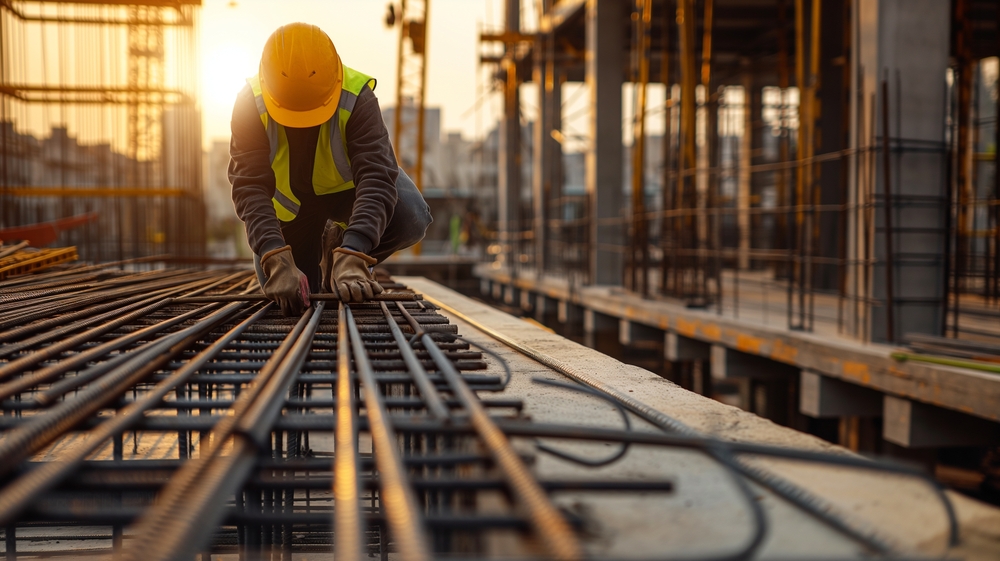The Department of Labor’s Occupational Safety and Health Administration (OSHA) sets and enforces standards to ensure all employees work in a safe and healthful environment. Because construction is a particularly dangerous industry – accounting for 1,056 work-related fatalities in 2022, the second most out of all industries – OSHA focuses heavily on the construction industry in its enforcement efforts. Below is a guide to OSHA compliance requirements for employers in the construction industry in Houston and beyond.
OSHA Requirements
OSHA requires that all employers comply with the General Duty Clause of the Occupational Safety and Health Act, which requires employers to keep their workplace free of serious recognized hazards. Employers are also required to adhere to all OSHA standards and regulations that apply to their industry. Because of the unique hazards of the construction industry, OSHA has established specific standards and regulations for construction employers.
Key Construction Standards
OSHA’s standards for construction employers cover a broad range of topics. Below are some of the most notable ones:
- Fall Protection: As falls from height are a leading cause of severe injuries and fatalities, OSHA is very concerned about fall protection. Each year, construction employers are cited for fall protection violations more than any other standard. The fall protection standard involves safeguarding workers from both falls and falling objects. This includes ensuring working/walking surfaces are able to support employees; using guardrails or other protective systems when employees are walking or working six feet above a lower surface; and taking appropriate measures to shield employees from potential falling objects.
- Ladder Safety: The ladder safety standard is perennially among the top cited OSHA construction violations. This standard involves proper use of various types of ladders and ladder accessories, including not exceeding a ladder’s load requirements and placing ladders at correct angles on stable surfaces. Ladders should be inspected prior to each use and removed from service if damaged, and all workers must be trained on ladder safety.
- Scaffold Safety: Another oft-cited standard concerns scaffolding. Employers must ensure scaffolds and scaffold components are able to support their actual loads, and that appropriate guard rails and other protections from falls are in place. Specifications for erecting and dismantling scaffolds, inspections and employee training on scaffold use are also covered under this standard.
- Hazard Communication: Many construction employers are cited each year for violating the hazard communication standard, which involves informing workers about hazardous chemicals on-site and providing appropriate safety training.
- Personal Protective Equipment (PPE): Construction companies must ensure workers are equipped with and trained in proper use of PPE such as hard hats, safety goggles, respirators, gloves and protective footwear based on the potential hazards that apply.
- Excavation and Trenching: To prevent cave-ins, trenches that are five feet deep or more must have a protective system in place. Trenches and protective systems must be inspected daily and whenever conditions change by a competent person.
Hazard Assessment and Training Programs
OSHA requires that construction employers provide employees with safety training in a language they understand. Training should cover hazard recognition, safe use of equipment and emergency procedures. Construction sites are required to have emergency action plans in place to respond to potential emergencies such as fires, chemical spills or severe weather. OSHA strongly recommends that construction employers regularly conduct a job hazard analysis to identify potential hazards and remediate them before they cause illness or injury. A job hazard analysis should focus on how workers perform tasks, use tools and equipment, and interact with their work environment.
Recordkeeping and Reporting
Construction employers with 10 or more employees must record serious work-related injuries and illnesses using OSHA’s Forms 300, 300A and 301. Records must be maintained at the worksite for at least five years and presented to OSHA for inspection upon request. Each year, from February 1 through April 30, employers must post a summary of the previous year’s injuries and illnesses where employees can see it. Construction employers who had 100 or more employees at any point in the previous year must submit injury and illness data via OSHA’s Injury Tracking Application (ITA) by March 2 of the following year (even if they did not have any reportable events).
All employers must report any worker fatality within eight hours and any amputation, loss of an eye or in-patient hospitalization of a worker within 24 hours. This can be done by contacting the nearest OSHA office, calling the OSHA 24-hour hotline at 1-800-321-6742 or filing an online report.
Penalties for Non-Compliance
OSHA’s fines for violations can be significant. For serious and other-than serious violations, employers may have to pay up to $16,131 per violation. For repeated or willful violations, fines can be as high as $161,323 per violation. In addition to financial penalties, OSHA citations can harm a company’s reputation among potential employees and clients, among other negative consequences, underscoring the importance of proactive workplace safety management and OSHA compliance.
Summing It Up
By properly managing your OSHA compliance program, you can protect your workers while avoiding costly penalties. An understanding of applicable standards, hazard assessments, safety programs, employee training and proper recordkeeping are all key to ensuring a safe, compliant workplace.
The OSHA and construction lawyers at Pappas Grubbs Price PC assist construction employers with the complex OSHA compliance process and help clients assert their rights throughout the OSHA inspection process. With offices in Houston, Dallas, Austin and San Antonio, we have successfully represented hundreds of clients across Texas and beyond in OSHA investigations and litigation. To speak to an OSHA attorney near you, contact Pappas Grubbs Price.














































